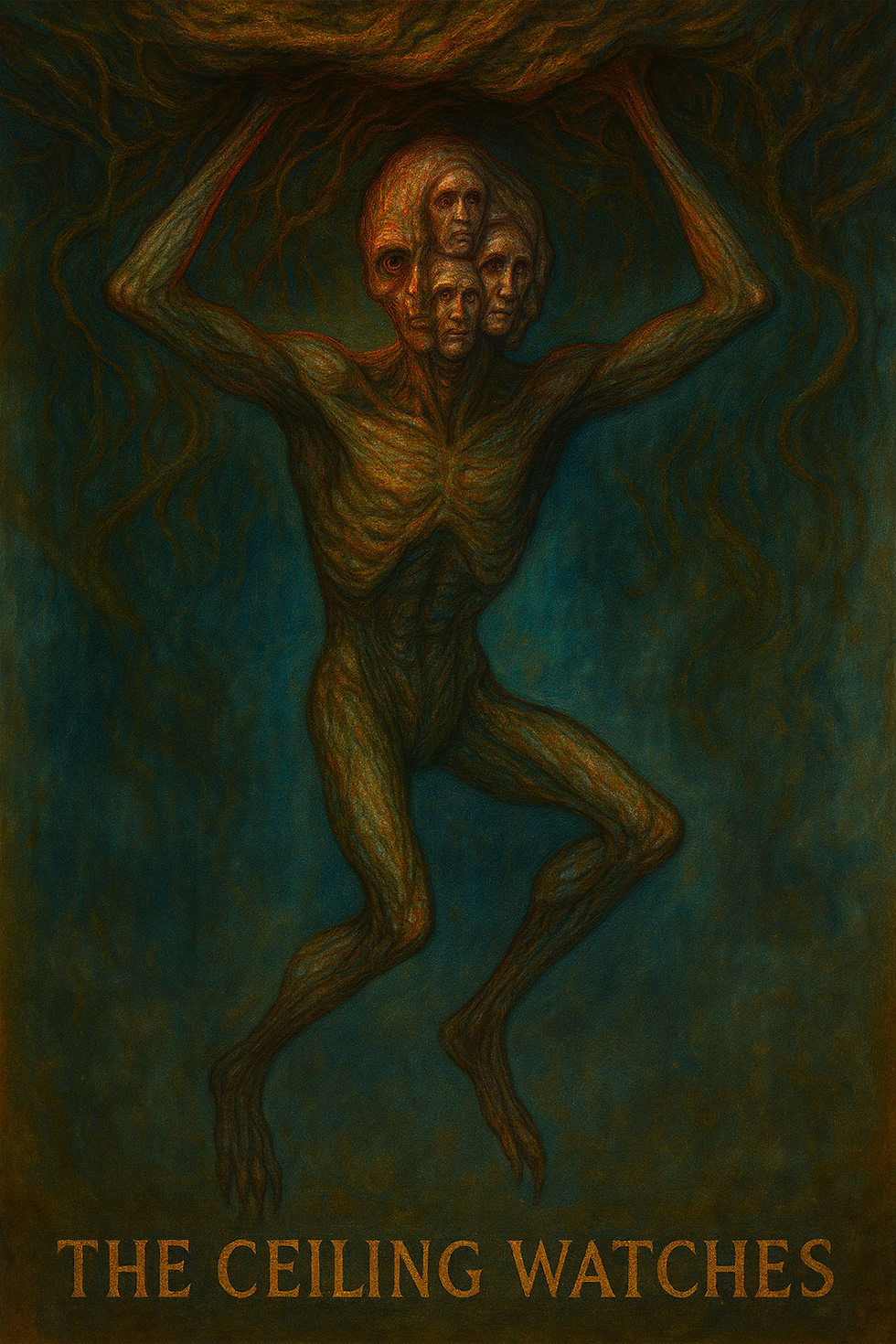The Lady in Flesh — Chapter 6: The Becoming (That Night)
- Joshua Bish
- Sep 9
- 3 min read

“She stepped forward. Into the slit. Into the wound. Into the hunger.”

Quick recap (light on spoilers)
The Tear does not close. The creature steps aside, and Wenonah crosses the threshold. What waits is not a place but a sentient wound: corridors of breathing walls, doors made of grief, and a hall that teaches her what she already is. The crossing strips language, then memory, then mercy. When she returns, it is not to the ridge. It is to a cold room that should not exist yet, marked with a number you know by now: 316. This chapter gives you the origin of the title itself: The Lady in Flesh.

Why this chapter matters (themes & tone)
Apotheosis through horror. This is not a descent; it is an ascent into function. Wenonah does not die. She becomes.
Wound vs. mouth. The chapter keeps asking if the Tear is an injury or an organ. By the end, it feels like a hungry machine that learned to sing.
Agency under pressure. Is this surrender or authorship. The step over the threshold is both. The book wants you to feel the complicity.
Time is a muscle. The corridor is a body; memory is connective tissue. Room 316 confirms that the myth bleeds forward into architecture.
Intimacy > spectacle. The horror is tactile and personal: thought-tendons on the scalp, floor that remembers you, a blade that is a shriek made solid.

Lore connections (series continuity & foreshadowing)
The Other Side defined. Not hell, not heaven, not “realm”—an awakening unplace that feeds on concept.
The Lady in Flesh is born. Keeper, Womb, First Lady of Teeth: Wenonah is installed as guardian and conduit.
Room 316. The timestamp becomes a door address. Expect that number to recur wherever foundations touch sacred stone.
Mirror-Wenonah. The skinless figure with the sorrow-blade is not a double so much as a stage in a cycle. You pass yourself on the way to becoming yourself.
Mouth, not wound. The final line affirms the cosmology going forward: the Tear is a promise.

Favorite lines
“Crossing the threshold was like being flayed without touch.” “The blade bled sorrow.” “There was a number on the door: 316.”
Each one retools a sense: skin without cutting, sound as metal, time as address.

Behind the scenes (craft & intent)
Sensory inversion. I built the Tear with misfit senses: heat that is memory, ash that is not ash, light that pulses from inside the walls. Each inversion tells you that natural law has been negotiated away.
Grammar of corridors. The sentences narrow as the hallway narrows. Long, breathing paragraphs collapse into short imperatives at the threshold. Your eyes should feel the compression.
Naming as installation. The titles (Keeper, Womb, Lady) arrive after the crossing. Names do not precede identity; they fasten it.
Horror as vocation. The goal was not to shock but to assign a job. Wenonah gets one. So does the Tear. So does the room. That is scarier than a single monster.

Content warnings
Psychological and cosmic horror; intense body imagery and transformation; references to prior graphic violence.
Question for the comments
When Wenonah steps into the Tear, is that a sacrifice, a coronation, or a surrender—and at what moment in this chapter did your understanding of her change for good?



Comments